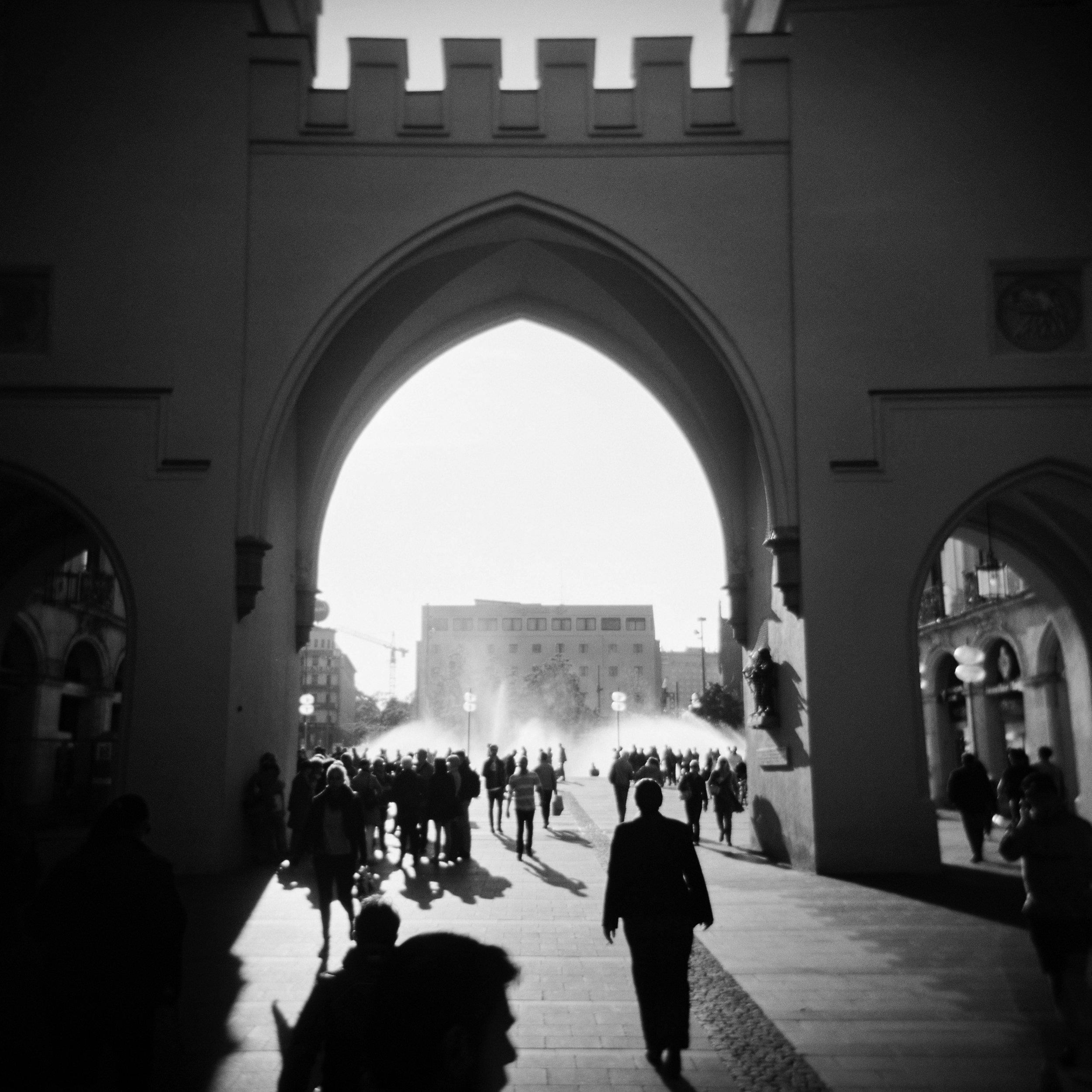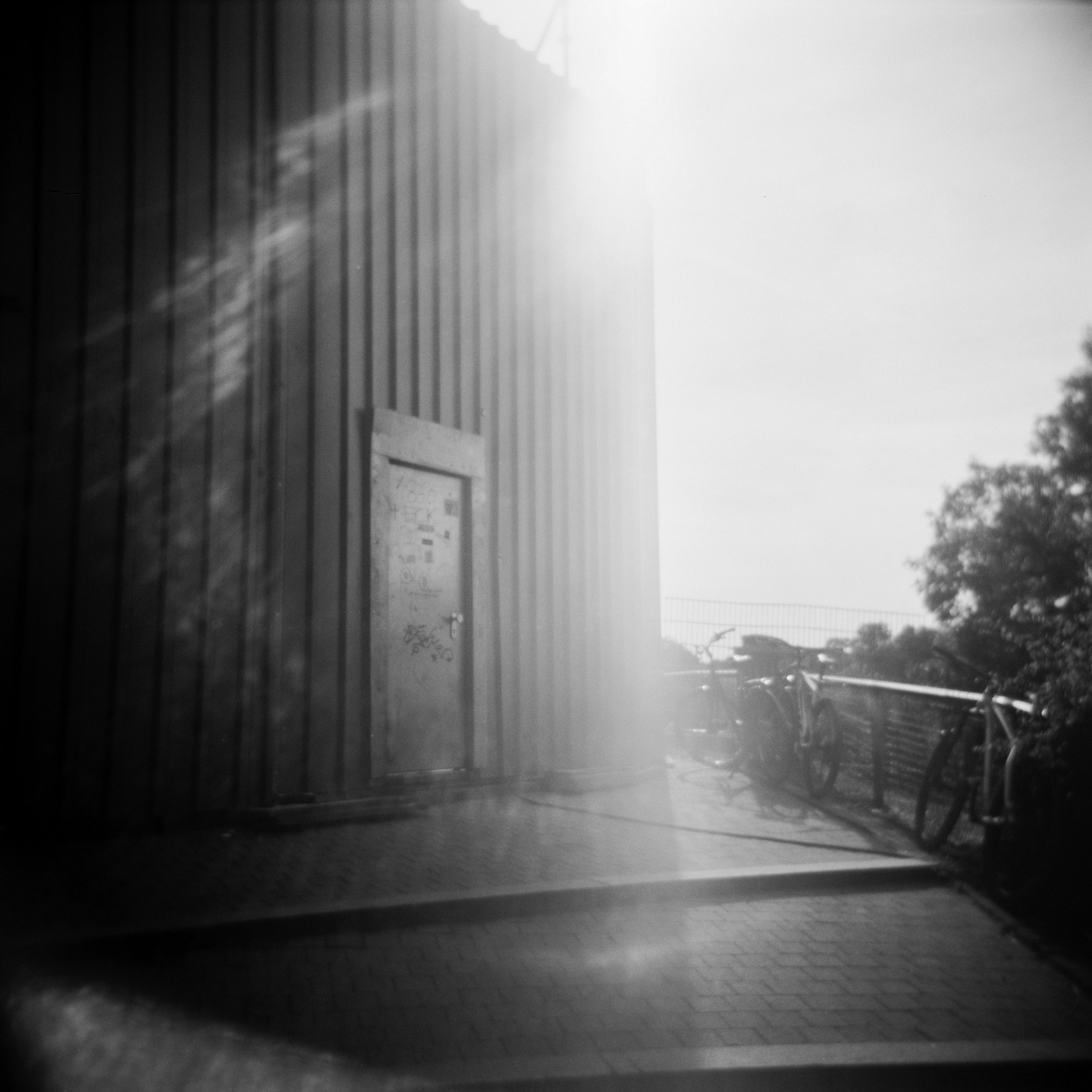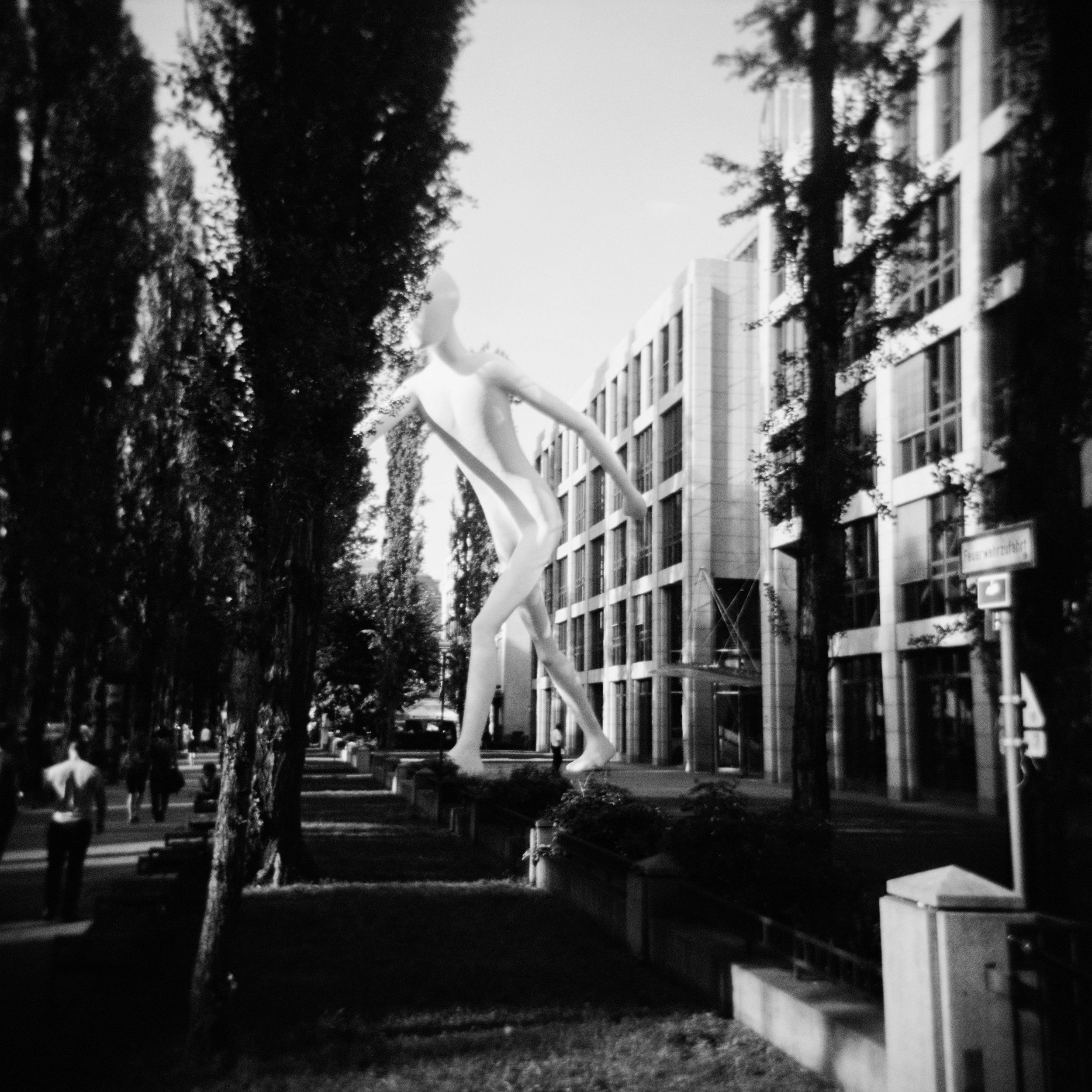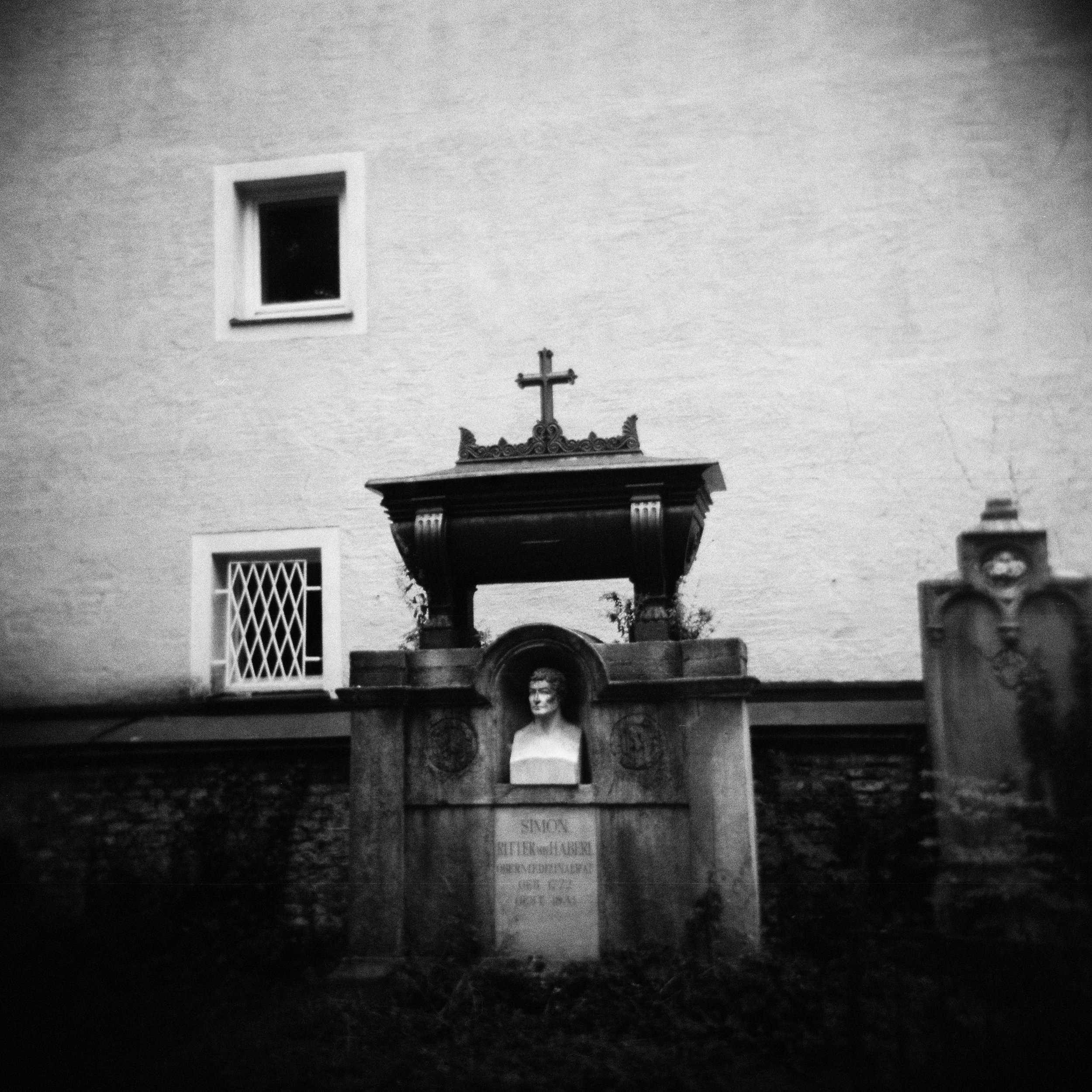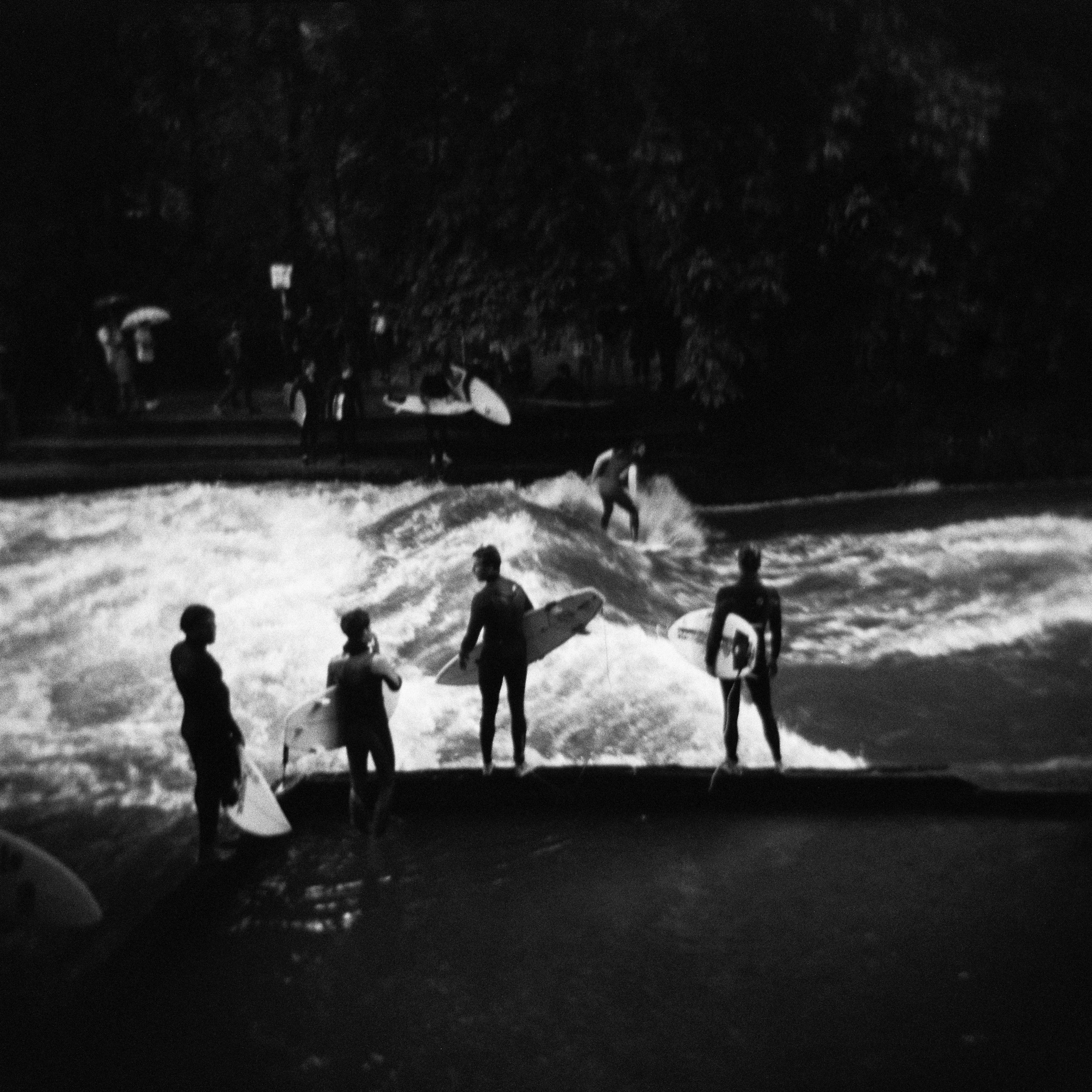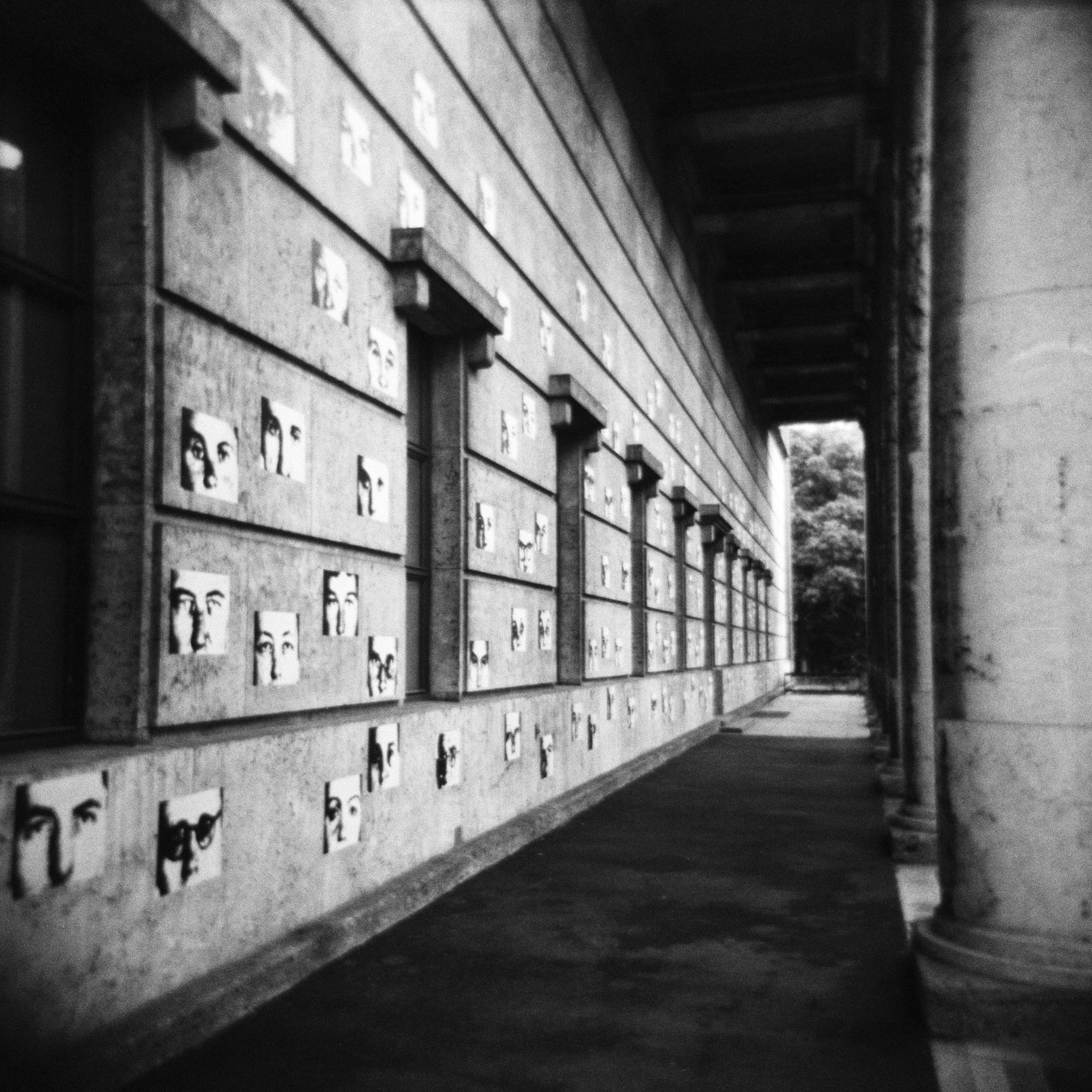Interview
Mario Grönnert
Mario Grönnert is a 39-year-old male born, living and working in the small historic town of Quedlinburg in the east of Germany. The next big step for Mario is having his works exhibited internationally in a group exhibition in Tokyo this June. Based on his interest in the Japanese culture and history, this is another life goal for him to achieve. He is already looking forward to it.
What is your background and how did you start your journey in the art world?
“Feeling deeply attracted by creativity from a very young age on, I started drawing and painting in my childhood and became aware of my fascination for photography in the early 90’s. Focusing on that for about 10 years, my creative work and interests unfolded onto making music in the beginning 2000’s. With this period of my life, I step by step realized that my artistic passion is not and most likely never was limited to one or few fields of creative work. Concerning the initial question, I understood I never started a journey in the art world, I am an artist on my very own journey through this world.
Art for me and as I see it for any other intrinsic motivated creative person too is not a goal to reach nor a phase with a beginning or an end to it. It is a way of being, operating, thinking and ultimately living. There is no choice that makes one an artist as well as there isn't a way to escape or willingly quit being an artist, even though one might be forced to stop creating by others or drastic circumstances. The key moment for an artist in life is when he realizes this and as a result of it finds himself in a continuous state of complete acceptance of what he is and what he's doing. There is no need for reassurance by the opinion, validation, certification, accreditation or payment by anyone else, hence there is no subjective effect on an artist concerning his profession, passion and way of being. So, when did my journey start? It was the day my life began and it will end with the day I die.
Further, I am convinced that if somebodies journey in the art world within his or her life suddenly and randomly started out of the blue may it be because of chance, luck or advantages of the momentum it is as clear as day to me that this person isn't an artist by definition. Somebody might work in a creative way from that point on, might be very skilled even, might be interested in art as a consumer or a part of an audience of actual artists but will forever lack the natural inherent disorder every single artist has, the undeniable omnipresent urge of addiction to their passion and purpose of existence.”
What does your work aim to say? Does it comment on any current social or political issues?
“Even though every piece of my work has its very own background of inspiration, ideas and a wide field of different influences to it, I do not aim for specific predefined statements or comments on any certain topic. On the contrary, I am sure that the more you are trying to give specific answers, statements or - if you really are self-destructive or naive enough - try to lecture an audience with your art the more you will drive them away from your original goal of teaching them anything and even keeping them interested in your work at all. This would lead to frustration for both the audience and the artist. A more suitable because more subtle way to approach an audience is to create pieces which function as an emotional surface for the viewer to project and reflect their own thoughts, ideas and feelings onto.
An artwork should not limit the audiences' perception with restricting explanations and preconceived conclusions. This would be the end of the existential sense of mystery which every great work of art needs to function, which makes it this half blind mirror that you can't look away from, caused by the human urge to figure out the unknown, to take a look behind the curtain. The thing is the moment you lift the curtain and see behind it the fascination suddenly ends and what you would be left with is not more than a possibly aesthetic piece of decoration without any mystery remaining. Of course an artwork can have a social and political aspect anyway and most have indeed but an artist can not create it directly. If the artist forces a political or social statement with his work without leaving space for interpretation, then he isn't embracing the mentioned mystery but creating a piece of flat out propaganda. History is filled with examples for this, the socialist realism of the German Democratic Republic, the art of the Third Reich but also wartimes propaganda works originating in basically all countries around the world for hundreds if not thousands of years.”
Do you plan your work in advance, or is it improvisation?
“I always felt more attracted to the concept of improvisation in my own creative work, compared to any sort of plan or scheme with restricting effects on the impression of freedom during the work process. Yet, I am getting more and more aware of the fact that creative work is a mixture of both aspects in a wider frame. I am comparable to an optical lens which collects every inspiration, experience, creative influence and form of sensation in life to focus and refract it instead of light into an own creative result every time I finish a piece of work. This way of operating continuously changes with progressing time due to the further growing amount of experiences and influences we all collect in our lives. The more of this creative process I have gone through, the more I understand how it functions for me in its most efficient and potentially emotional fulfilling way. This aspect is what comes close to a plan for creative work because me as well as the rest of humanity is tending to anticipate in which way they will reach what they long to achieve. This is where I plan as an artist as well of course.
The improvisation part, on the other hand, takes place within the work on every individual piece. In my case, mostly in the form of a single picture I am working on. I start it with the whole amount of external influence like described which comes together with a rough idea and an emotional projection which will set the basic mood and look of the image as it most likely will turn out at the end. Then I choose the photo or concerning my ongoing project a set of photos I have the overall impression of being suitable for that matter rather randomly and start with one of them as a basic layer. From that point on, the picture which is slowly developing shows what it needs and what not just by adding up and keeping or removing different components. It basically works like a story which tells itself while it’s written down by the author. The more the work proceeds, the clearer the result becomes.”
Are there any art world trends you are following?
“There are several I am interested in but none of them is more inspiring and thought-provoking for me than artificial intelligence. It is one of or even the most fascinating and at the same time frightening historic leap forward in humanities technological development. It will reshape or way of living, working and socially interacting more than anything before, and it functions furthermore as a unique instrument to reflect and project the abilities of our species in the most efficient way possible at an only accelerating speed of development. What took hundreds or thousands of years in humanities past will now or soon enough be possible to experience within a single lifetime. Therefore, the effects on the art world will be only one fraction of the whole prism of changes driven by artificial intelligence, which we are facing today and will face in the future. This will lead to numerous new possibilities and chances as well as a lot of problems obviously.
On one side, AI will democratize the means of production further than modern technology already did due to a drastic increase of productivity available for relatively cheap prices for everyone owning a computer or mobile device, on the other hand it will create a by now unknown amount of dependencies and a lack of transparency for its users in all fields. Interestingly, today's effects of AI on art are a small scale model of its overall capacities. The tremendous efficiency in for example creating images via text to image AI are the one that effected me the most by now. It is possible to create pictures by briefly describing ideas in only a few seconds, yet the user can not completely control the details of a single generated image and leave a relatively high amount of influence within the process to the AI. This itself leads to completely new forms and workflows of creation and an unfolding debate and criticism of the art status of its outcomes. One might argue that AI only reassembles a piece by all its reference input and this might never lead to completely new forms of original creative results, but this leaves the role of the human actually using a text to image AI aside to stick with this example. The idea for a picture is already imagined and then described by the human user for the AI to generate, and then most likely the envisioned result will not be taken as a final version by only generating an image in one try. In most cases of such a creative process, a vast number of retries to generate the final version of the image with the same or alternated text descriptions will be carried out. Besides that, there will be an evolutionary aspect taking place by development through the selection made by the human user off the different results generated by the AI.
Ultimately, it is the human who is and will remain the determining creative factor concerning the final result, but his role will pivot more towards an editorial and curating factor within the process of creation. This is going to increase the effectiveness and decrease the amount of necessary technical skills of the user, the artist in this case. Yet, this is exclusively focusing on the stages of creative work involving AI. It is highly questionable that every single form and stage of the creative process will involve this technology, just because of its mere existence. An artist still will work on the resulting images of an AI creation in one or several non AI including forms like retouching the AI image by hand or combining it with other AI images or completely traditionally created images by the artist himself. The workflow variations are not limited because one or more stages involved AI images, on the contrary, this opens up a lot of new possibilities. The more one thinks about the critical discussion, the more it becomes obvious that this form of discussion isn't exclusively connected to the use of AI, it's not even new at all. In the second half of the 18th century, lots of painters and all sorts of people in the art world establishment of its time had a remarkably similar debate about a whole new and for them estranging technology: photography. In the beginning it wasn't considered an art form. It was broadly seen as an artificial technology which simply reproduced the already existing objects and subjects it was focused on. In the eyes of its critical beholders back in the day, it lacked the human aspect they saw in a sujet painted by a human artist who seemingly needed to emotionally reflect the felt and perceived sensory impressions onto the canvas. The ways of development, use and criticism of new technology and its possible future outcomes are ultimately making one thing clear, the inventors themselves didn't develop all too much in the same amount of time.”
“An artwork should not limit the audiences' perception with restricting explanations and preconceived conclusions.”
What process, materials and techniques do you use to create your artwork?
“An artist and every creative operating person will use each and every form of existing material and tool which is available and every process which the connection of these two aspects are allowing him to carry out his creative work. All possible or impossible means of production in or out of reach of an artist would never hold him back from doing what brings him closer to what he longs to achieve. Consequentially, the means of production for my work permanently change over time due to different combinations of accessible resources, yet some favorites are lasting since decades. The first to mention is analog film photography. I am mostly using middle format cameras and negative as well as small film occasionally. My love for this kind of photography might be connected to my age and the fact that there wasn't any other basic photographic technology available by the time I first got in contact with it, or it is the process and technique itself really that attracts me that much. It’s almost impossible to separate these two aspects for me. In the predominantly digital times we are living in today, they might have even blended into the very same perception of the matter, at least for artists who started their work in the all analog times of photography.
The only available process of the past might have reached a state of nostalgia by now when it is not exclusively necessary anymore, and we might have adopted that emotional point of view even if it wasn't there in the beginning. Besides this strong connection to the analog process I have grown accustom to the digital side as well primarily for its clear benefits in case of efficiency which makes it undeniably more practical and less expensive. That's where the benefits begin to influence my decisions for creative processes today. The best way to handle them for me is by combination. It is as well where pragmatic and practical decisions start to influence the creative side of a process. An artist never thinks practical exclusively, otherwise he wouldn't make art at all. So, one got to decide with each upcoming project which processes and techniques are practically possible and beneficial to the artistic statement of an artwork or series of artworks. Besides the technical aspect of the process and its influence, there is another important factor to mention, the social aspect. The collaboration with another artist. It happens rather rarely but can contribute a lot to the final outcome because a whole new individual perspective and set of influences are projected onto the artwork. The negative side of a collaboration is you seldom find a suitable and like-minded artist who has the necessary connection to work with you. There is no possibility to plan or force this connection. It seemingly appears out of nowhere and is in no way possible to be rationally described. Likewise, the dynamic of attraction in a romantic relationship, the circumstances of attraction in artistic collaborations are simply there or will never appear. Even though they do not need to include any sort of romantic emotions between the artists of course.”
What does your art mean to you?
“"It's my wife and it's my life," to quote from a Lou Reed song. It's my continuous concept of purpose, passion and obsession in life. It sticks with me every single day and it determines the way I see and approach the world around me. Art is my life not just because I basically said goodbye to a career in likely well paying and secure jobs or entrepreneurship and with this to a comparably high status in social reputation and acceptance within the permanent hierarchical competition in our society in its favor, it is my life in the philosophical approach to existence as well. The older I get, the more I realize that the only real worth of the work of an artist is not connected to any sort of measurement by society, the art market or any other individuals who besides that are very welcome to be emotionally impacted by an artwork positively or negatively at any time. The only criticism that's inevitably necessary for an artist is his own temporary feeling of achievement caused by a finished piece or project. Though it never lasts more than a few days at a time the urge to feel it again is consistently present. This emotional impact is where being an artist is comparable to an addiction.
The difference, on the other hand, is that compared to the addiction to heroin for example, to get back to Lou Reed's lyrics is that in art there is no effect of "chasing the dragon". Which means there is no unfulfillable urge for an artist to recreate the feeling of his first finished artwork like there is the urge in a heroin addict to relive the impact of his, in its intensity defining high, first injection, which of course will never be possible to recreate. The grace of being an artist is the lack of tendency to overdose on it. If you accept what you are and in its consequences that what you do is not serving any practical or pragmatic purpose, you will reach a state of peace with the world and your existence in it. At this point it is easy to let go of the negativity based in our longing to reach approval and appreciation for our work and what most of us recognize as our content of life in a basically destructive way. Being an artist continuously taught me to become more and more indifferent. Which here is solely meant in its non-negative form and not to be confused with its widespread passive-aggressive and frustrated interpretation. That would be nothing more than the negative outcome of addiction.”
What’s your favourite artwork and why?
“That keeps changing over the years due to my personal experiences and their influence on my character development and mental state, as well as the mere knowledge of the existence of an artwork that I would consider as a favorite. Today the first that I would call influential is the oil painted triptych with predella "Der Krieg" by Eastern German painter Otto Dix. A painting which contains style and form elements of religious altar paintings of the Renaissance yet showing an apocalyptic, nightmarish battlefield scenery, seemingly taking place after the actual fighting during the First World War in which Dix fought himself as a solider in the German imperial army. This painting slowly grew its impact on me over decades. I remember vividly seeing it printed in the First World War chapter of my history textbook during the first year of secondary school. Even seen in that small format, the painting fascinated me more than anything else in that book. Astonishingly for me back then, it was a painting that spoke to me so much more compared to all the actual photos the book was filled with. Without even thinking about it a lot, I experienced the aspect of mystery in art which provided so much more fascination than sober documentation could have ever caused in me.
As long as I had that book as a rented copy from my school, I came back to the painting over and over again in almost every history lesson it was laying on the table in front of me. In 2019 I visited the Kunstmuseum Stuttgart to see its temporary exhibition "Ecstasy" which had another painting of Dix, a portrait of a dancer from the Weimar Germany period in its curation. This was the first time in years I remembered Otto Dix and his painting. After I left the "Ecstasy" rooms and randomly strolled to the permanent exhibition of the museum, I found out that they had a whole room of Dix paintings and "Der Krieg" was among them as a loan from the Galerie Neue Meister in Dresden. To see the Dix room was a completely different level of experience compared to everything I saw that day and for a long time until now I wasn't this impressed by an artist in this intensity. Compared to the other rooms, Dix appeared to be on a whole different level as an artist. Even though that might have been my individual point of view connected to the memories of the fascination I felt for the print in my history textbook, I never in life had such a strong opinion that an artist is objectively better compared to all the others exhibited alongside him. That still keeps me thinking about the powerful consequences of perception, individually and collectively, and the role of these effects in art.”
Have you had any noteworthy exhibitions you'd like to share?
“Because of their relevance as personal milestones, those were my first participation in an exhibition abroad which took place in London beginning of 2023 and a group exhibition in Milan, Italy which ended just a few weeks ago.”
Website: www.mariogroennert.com
Instagram: @mariogroennert


